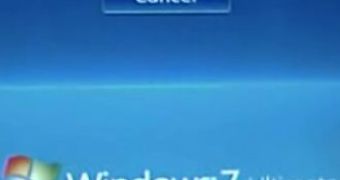Microsoft is hard at work building the next iteration of Windows. Developed under the label of Windows 7, after Steven Sinofsky, Senior Vice President, Windows and Windows Live Engineering Group, dropped the practice of using codenames and turned the Windows project onto product numbers, the successor of Windows Vista is already out and about, as Milestone 1 Build 6.1.6519.1 is already available to key company partners for testing. But in this early stage of development, Milestone 1 does by no means even scratch the surface of what Windows 7 will end up as.
As yet, Windows 7 M1 installs on top of Vista Service Pack 1 and, in this context, is not even a stand-alone product. But the fact that it uses Vista as its infrastructure means that the future evolution that will be implemented into Windows 7 is not visible yet. And one aspect that Microsoft will focus on, with the next version of Windows, is advancing the user interface.
After a speech at Stanford University, Microsoft Chairman Bill Gates indicated to Beyond Binary in an interview that Windows 7 would stretch beyond what Vista SP1 and Windows XP SP3 are delivering in terms of user interface and the way people would interact with the platform. Gates expressly referred to alternative methods of interaction, on top of the now traditional mouse and keyboard. Windows 7 will bring a new level of speech, ink and touch.
"The version after Vista is a big step forward in terms of speech. It's a big step forward in terms of ink. It's a big step forward in terms of touch. The likelihood is that touch will become mainstream on certain form factors very quickly because we are working hand-in-hand with the hardware companies. Speech and ink it's a little harder to say," Gates promised.
In this regard, Windows 7 falls under Gates' vision of natural user interfaces. Be it with vocal commands, with pen gestures for Tablet PCs, or with touch, Windows 7 will feature technology that is either just developing at Microsoft, or that has already been implemented into existing products. Just think of the next stage in Vista's speech recognition, the next step from Microsoft Surface (surface computing) and InkSeine for Tablet PCs and UMPCs.

 14 DAY TRIAL //
14 DAY TRIAL //